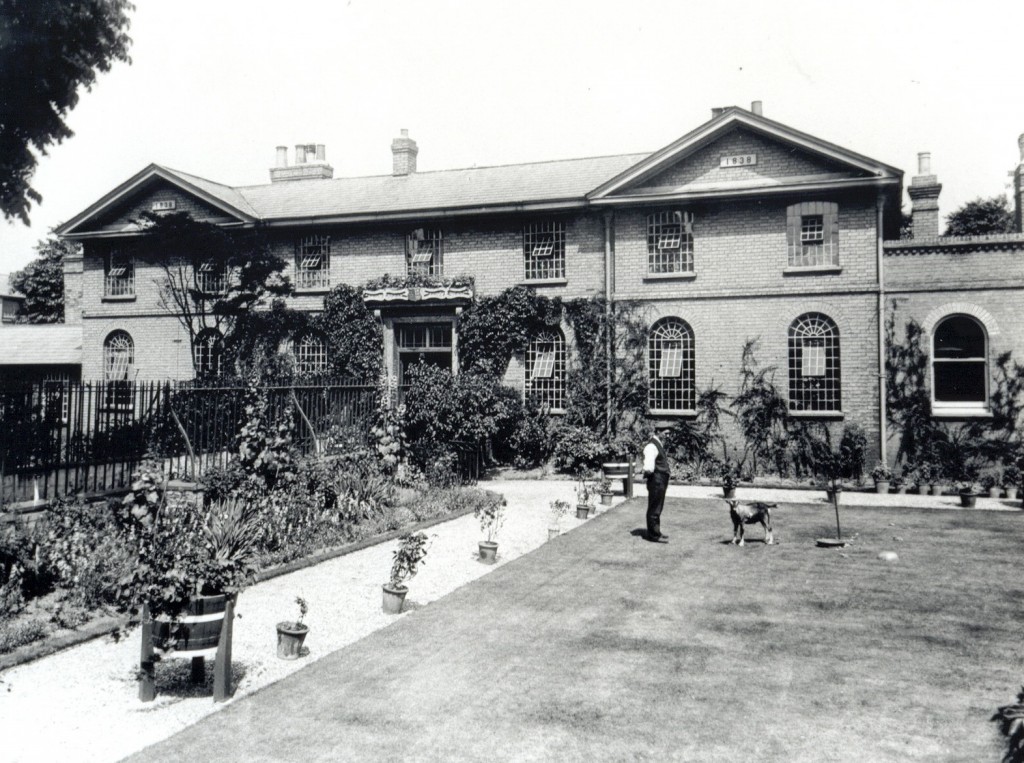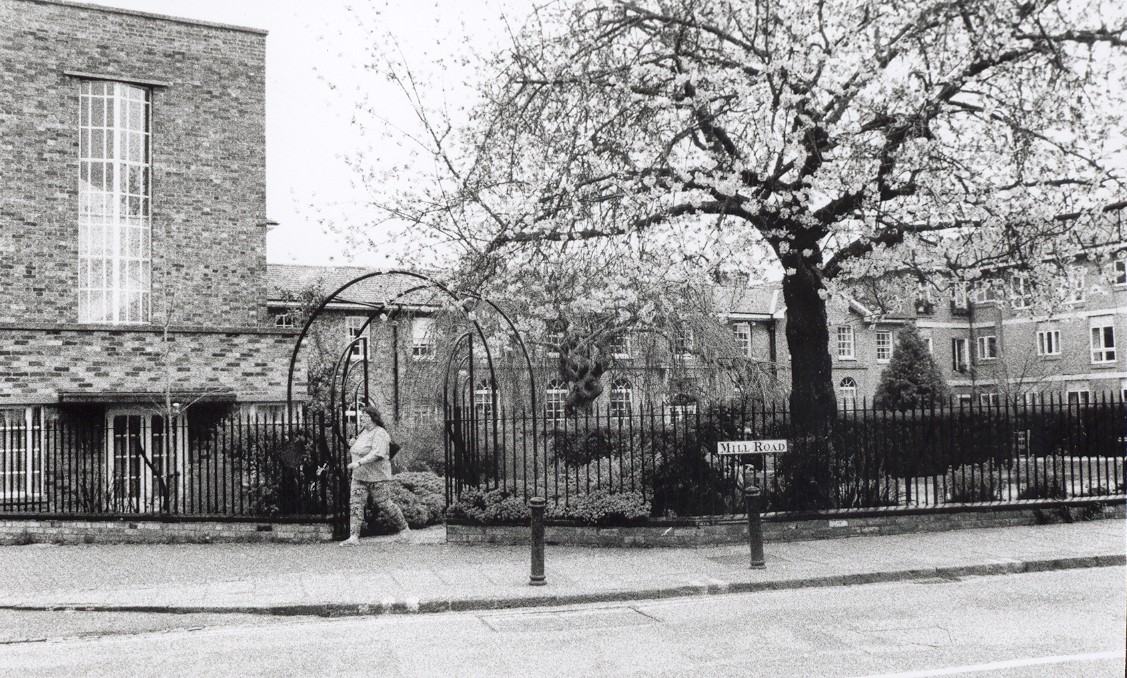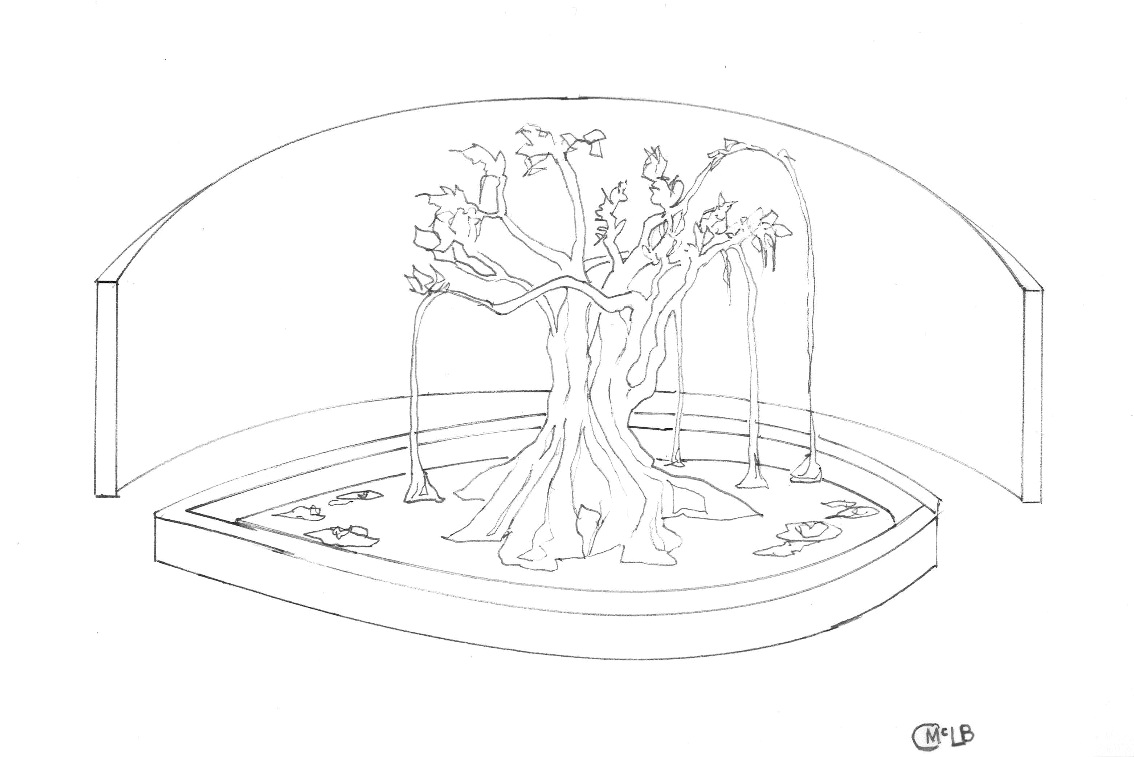Location and Significance
The fountain will be sited at Ditchburn Place, a location of historical and cultural significance. Mill Road, known for its multicultural character, is an ideal setting to reflect the diversity and contributions of Commonwealth soldiers, fostering a deeper connection between Cambridge’s residents and its shared international heritage.


(Images courtesy of Cambridgeshire Collection)
The fountain will be designed to sit sympathetically within Ditchburn Place, adjacent to the Cambridge Gateway from India blending seamlessly with its surroundings.

The precise location of the water feature within Ditchburn Place was chosen after consultation with the gardeners and maintenance staff who regularly attend to the site. (See Diagram 4). They recommended this position as it best complements the existing landscaping, taking into account the arrangement of trees and flora. Moreover, this spot offers optimal access to existing water infrastructure and utilities, facilitating seamless integration into the current infrastructure. This thoughtful placement will enhance the aesthetic harmony of the space while ensuring practical feasibility for long-term maintenance.
Accessibility will be a priority, with pathways and seating designed to ensure that visitors of all abilities can reflect and engage with the memorial comfortably. We plan to provide Signage and descriptions in multiple languages to reflect the diverse heritage of those being commemorated.
Community and Scholarly Engagement
We have already engaged with the local community, including representatives from the Indian, Pakistani, Bangladeshi, Sri Lankan, Bhutanese, Burmese (Myanmar), and Nepalese communities. This collaborative approach ensures that the design and narrative of the memorial reflect the shared histories and contributions of these diverse nations.
Respected historians and scholars, including Bobby Singh and Raj Mann, have provided invaluable guidance on the historical and cultural accuracy of this project.
Additionally, we hope to collaborate with embassies and cultural organizations from the nations represented in the memorial to strengthen international ties and enhance the authenticity and significance of this tribute. Furthermore, collaboration with the British Army will ensure the memorial accurately reflects the shared military history, and their ceremonial involvement will enhance its prestige.
Purpose and Impact
- Historical Commemoration: Honour the memory of fallen soldiers from diverse backgrounds who fought for freedom and peace.
- Cultural Recognition: Acknowledge the contributions of multiple nations, promoting understanding and respect among different communities.
- Community Engagement: Enhance Cambridge’s cultural landscape by encouraging educational initiatives and events around the memorial to inspire reflection and unity.
- Educational and Tourism Potential: Serve as a focal point for schools, universities, and visitors, offering educational opportunities about the contributions of the United British Indian Army (1898–1947) and enriching the city’s cultural heritage.
By hosting this memorial, Cambridge reinforces its role as a leader in promoting multicultural understanding and remembrance, setting a precedent for other cities in honouring diverse contributions to global history.
Budget and Funding Plan
The projected total budget for the Freedom Fountain Memorial is currently estimated to range between £100,000 and £150,000, depending on final material selections, casting requirements, landscaping scope, and technical installations. Funding is being pursued through a combination of sources:
- Grant applications to national and heritage funds
- Local and international community contributions
- In-kind support from academic partners and engineering collaborators
- Crowdfunding and philanthropic sponsorships coordinated through Mill Road Traders CIC
This blended approach aims to ensure transparency, sustainability, and community ownership of the project
Maintenance and Stewardship Plan
To ensure the fountain’s long-term care and public safety, a detailed maintenance strategy will be developed in consultation with Cambridge City Council’s Parks and Open Spaces team. Key elements will include:
- Annual inspections of the hydraulic system, bronze features, and stonework
- Solar panel and pump servicing
- Cleaning of bronze floral elements and the Buta Pond basin to prevent mineral deposits and algae build-up
- Vandal-resistant coatings on plaques and key surfaces
Mill Road Traders CIC will explore partnerships with local heritage organisations and veterans’ groups to support stewardship through voluntary or civic channels. All water features and landscaping will meet safety standards to ensure accessibility and comfort for all visitors, including children and elderly guests.
